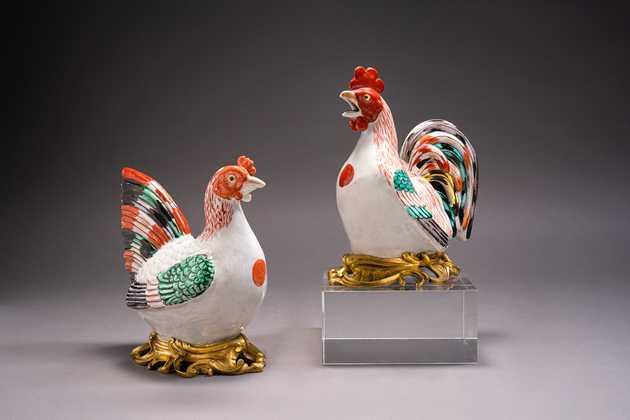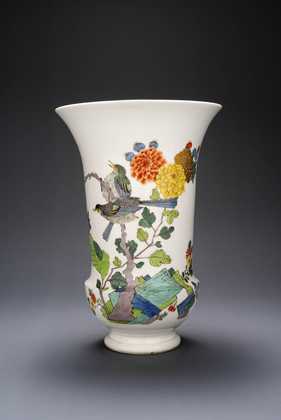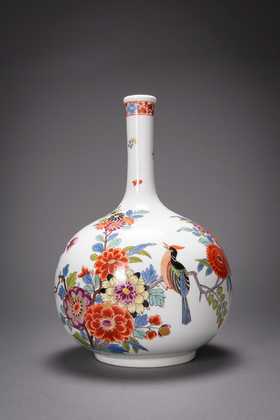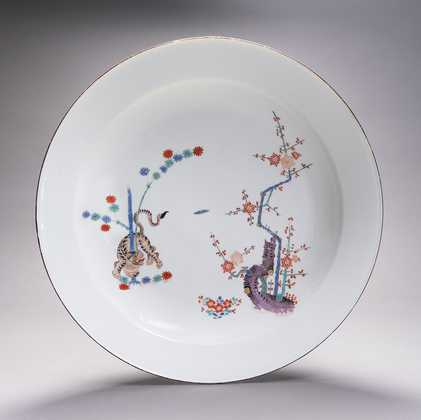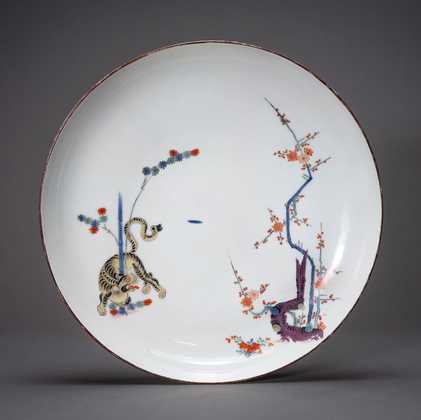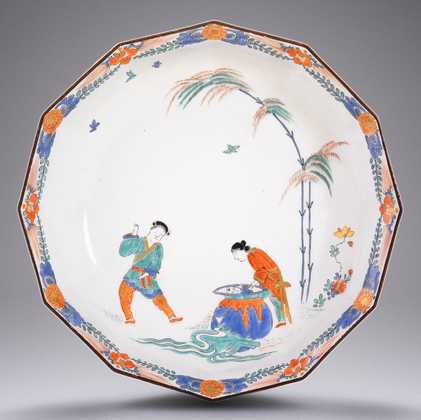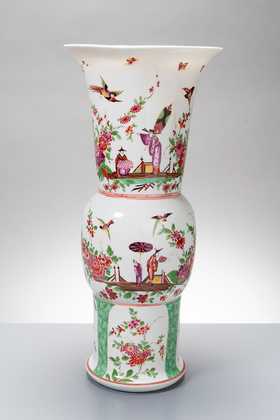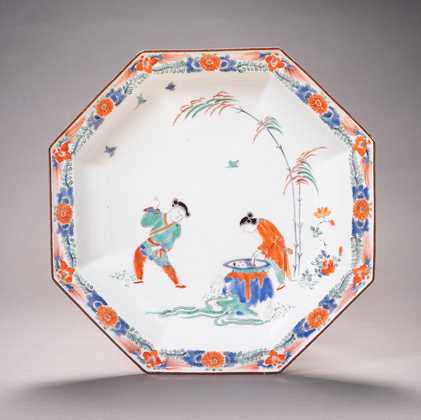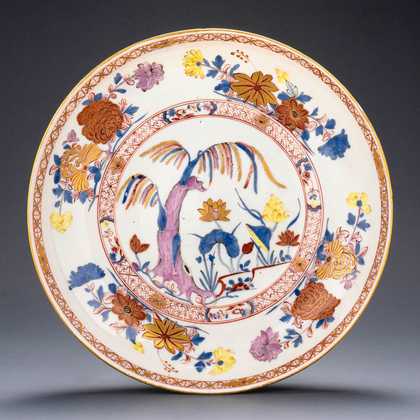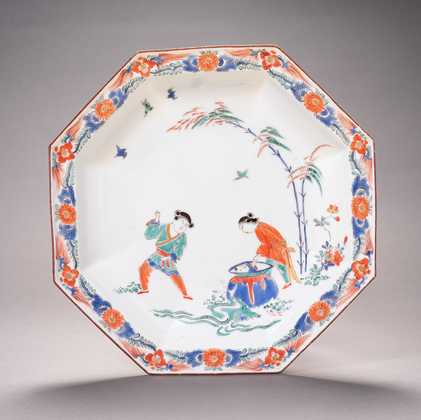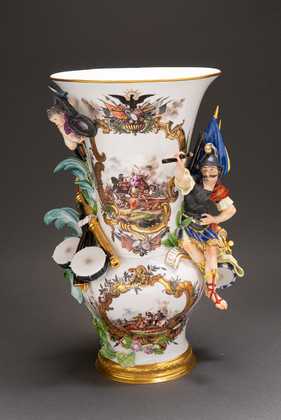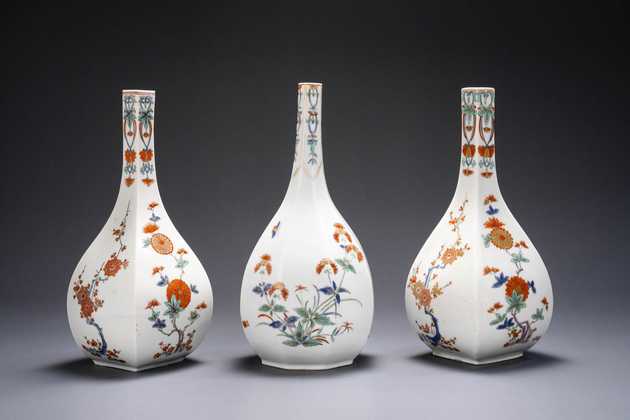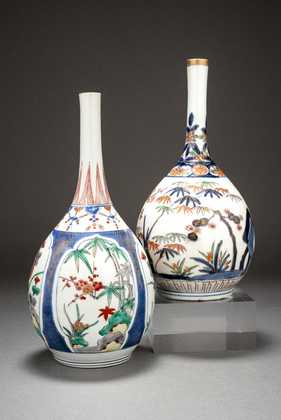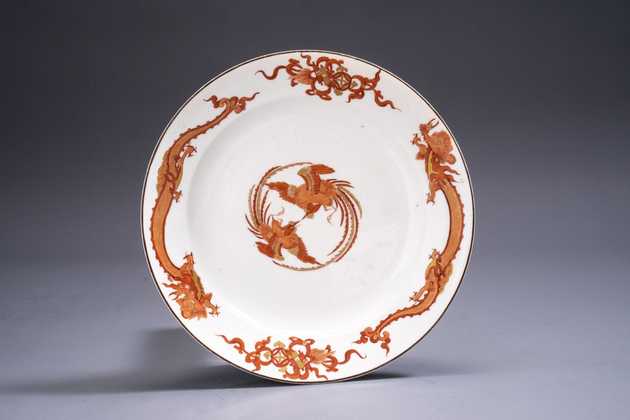





A ten-sided Meissen Kakiemon dish from the collection of August III.
Painted with the far east symbols of longevity: flaming tortoise, dragon, crane, bamboo and pine-tree
Porcelain and painting Meissen 1730
Crossed swords mark in overglaze blue
Incised Augustus Rex mark from 1734
Ø 24,8 cm (9 3/4 inch)
Provenance: Dr. Max Fahrländer (former president of the association ‘Keramikfreunde der Schweiz’)
Description
The incised monogram AR is more than rare. Up to now, there are only two Meissen pieces known which bear this particular mark. Beside the present dish there is one other carrying the ‘Yellow Lion’ motif, which can be found in the Collection Ernst Schneider, Hetjens-Museum Düsseldorf (Weber vol. I p. 89 fig. 39 a-c).
The design of the presented dish refers to a Japanese example from rd. 1700. Its painting shows five symbols of longevity (cf. Collection Arnhold no. 234.1 p. 505; Ashmolean Museum, Oxford in Porceain for Palaces no. 123; Coll. Syz in Shono no. 55; Fitski fig. 215).
As the crossed swords mark in enamel blue shows, the dish was part of the so-called Hoym / Lemaire collaboration. However, before Lemaire could sell it on the Parisian market, it was confiscated in 1731 in Count Hoym’s house. Unlike the six, still verifiable comparative dishes from the Royal Collection (all with the palace no. N=49-W), our piece probably remained in the manufactory as a painting model for Höroldt. The AR monogram, incised and blackened in 1734, refers to a decree by August III, which states that motifs marked with AR were reserved for the king only.
The six plates with the Johanneumsnummer "N-49-W" (without AR mark) are today:
- 2 pieces (‘Johanneums-Auktion’ 07. - 08.10.1919 no. 179 - 180 plate 21)
= Coll. Klemperer (no. 173, 174 without fig.) - Rückert 1966 (p. 91, no. 291, plate 75)
= Shono (no. 56) - Coll. Arnhold (no. 234)
= Coll. Simon Goldblatt Esq. (Sotheby’s 29.06.1959 no. 293)
= Coll. Schnyder von Wachtensee (Sotheby’s 29.06.1982 no. 17 ) - Coll. Ludwig (no. 47)
- Newman (Vol. 1 fig. 37)
Additionally, there is another dish published in the Düsseldorf exhibition catalogue (Pietsch 1997 no. 144). This piece bears the inventory number ‘N-153-W’, which usually refers to dishes with the ‘Shiba Onko’ motif.
Please contact us for the complete expertise.
Literature
Weber, Julia: Meißener Porzellane mit Dekoren nach ostasiatischen Vorbildern, Band I. München 2013
Weber, Julia: Meißener Porzellane mit Dekoren nach ostasiatischen Vorbildern, Band II. München 2013
Cassidy-Geiger, Maureen: The Arnhold Collection of Meissen Porcelain 1710-50. London 2008
Shono, Masako: Japanisches Aritaporzellan im sogenannten "Kakiemonstil" als Vorbild für die Meissener Porzellanmanufaktur. München 1973
Fitski, Menno: Kakiemon Porcelain. Rijksmuseum Amsterdam 2011
Picture-gallery















